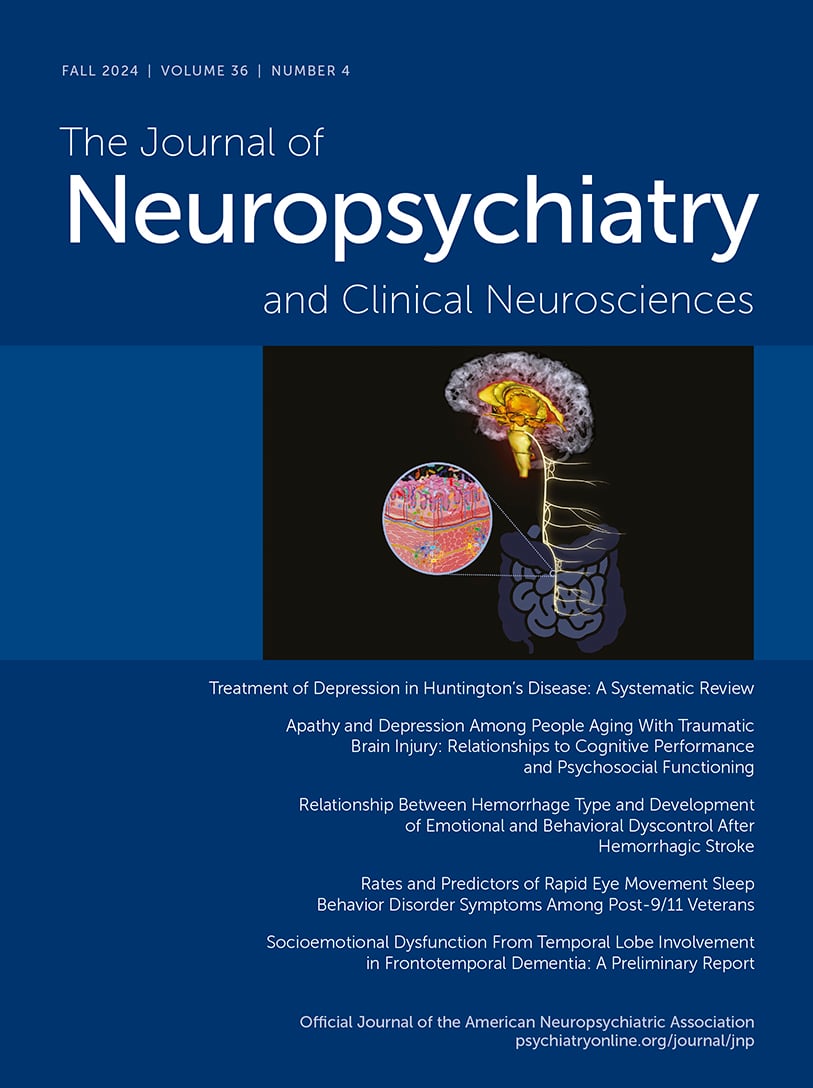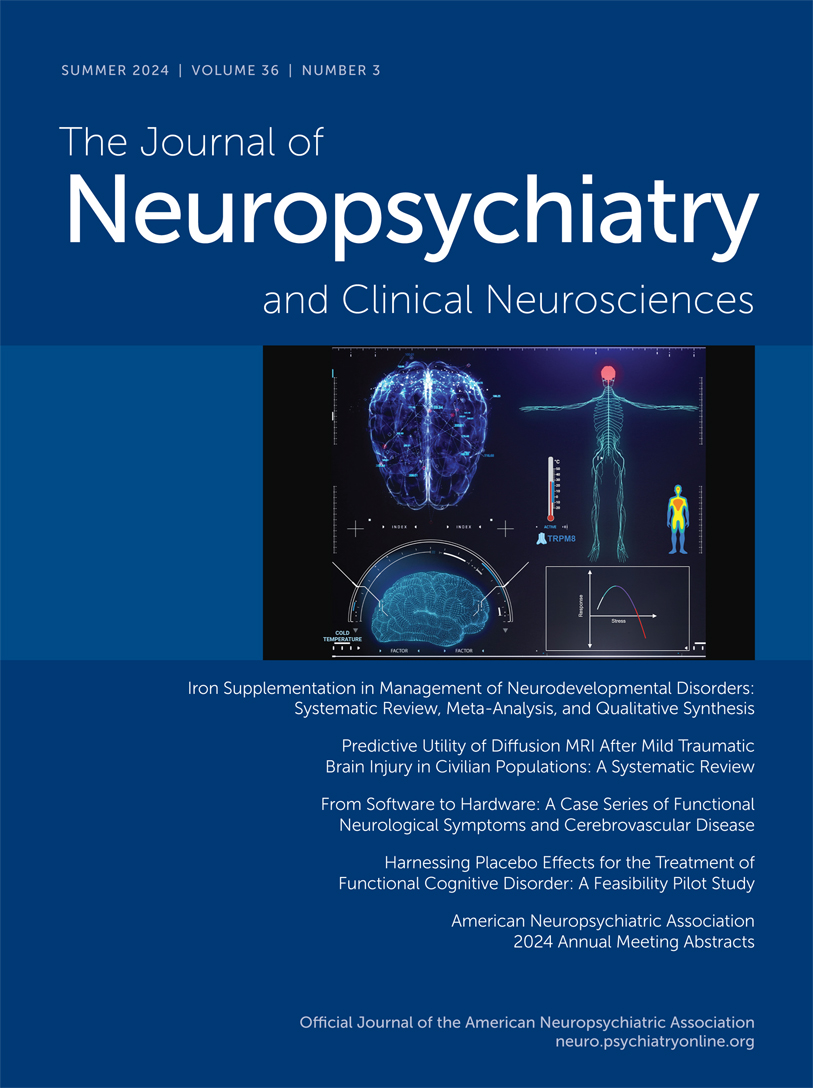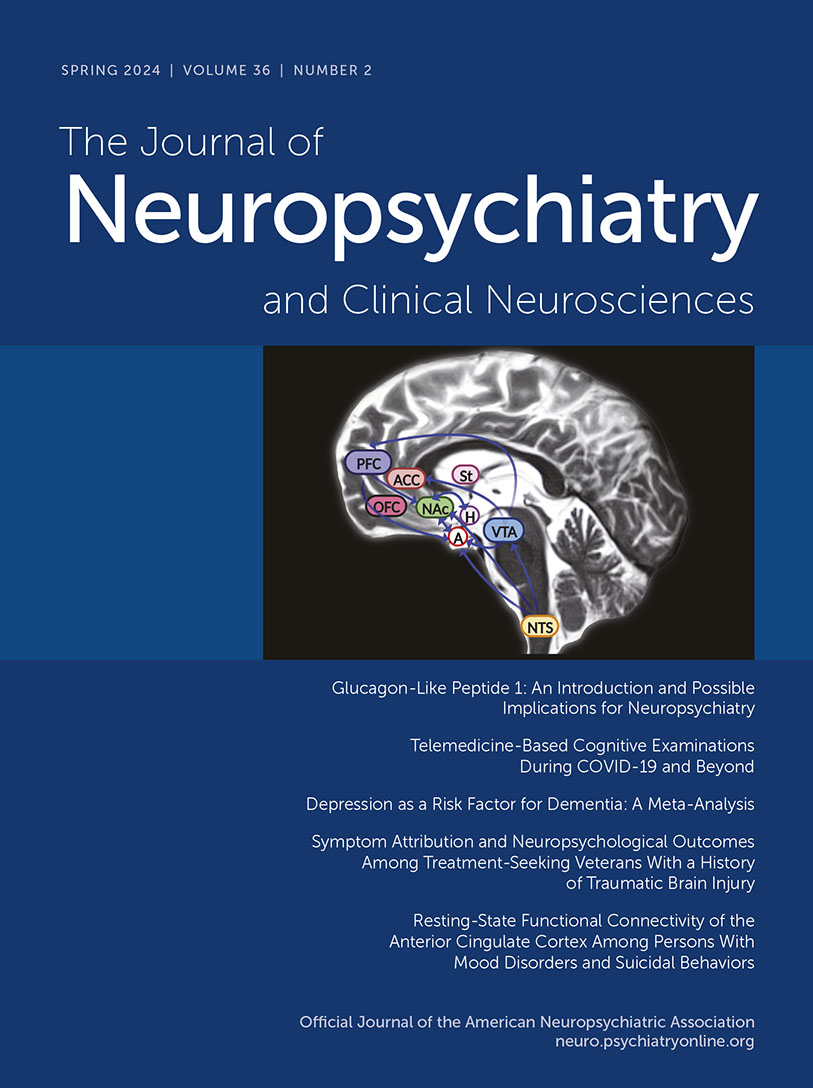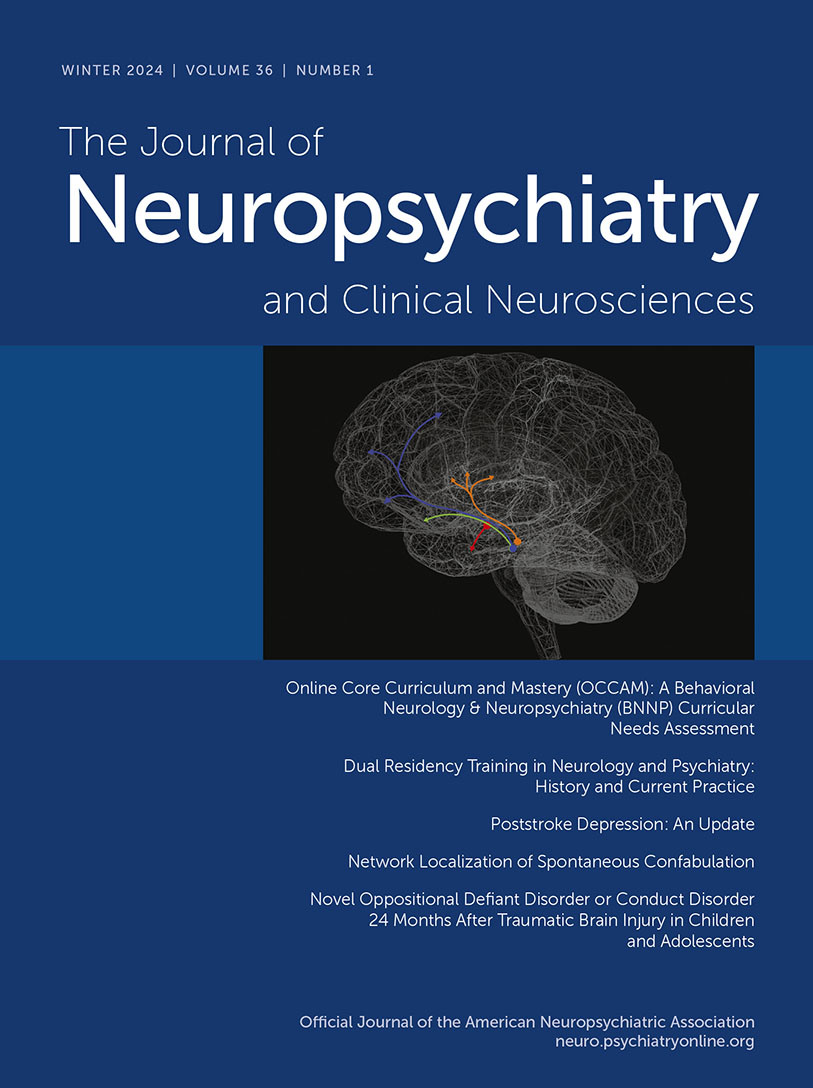The Journal of Neuropsychiatry and Clinical Neurosciences
- Volume 29
- Number 1
- January 2017
Windows to the Brain
Regular Articles
Publication date: 19 August 2016
Pages6–12This study conducted a preliminary examination on cognitive reserve (CR) as a modifier of symptom expression in subjects with autopsy-confirmed chronic traumatic encephalopathy (CTE). The sample included 25 former professional football players ...
https://doi.org/10.1176/appi.neuropsych.16030043Publication date: 15 July 2016
Pages13–21In this cross-sectional study, we examined the neuropsychiatric profile of mild cognitive impairment (MCI) and Alzheimer's disease (AD) using the Neuropsychiatric Inventory Questionnaire (NPI-Q). Data were available on 875 controls, 339 MCI cases, and 975 ...
https://doi.org/10.1176/appi.neuropsych.15120423Publication date: 10 November 2016
Pages22–25The authors studied the effects of rasagiline on cognition in a sample of 50 nondemented patients with mild to moderate Parkinson’s disease (PD) using a double-blind, placebo controlled design. Cognition and motor symptoms were assessed at baseline and ...
https://doi.org/10.1176/appi.neuropsych.15050118Publication date: 15 July 2016
Pages26–30Severity assessment scales for frontotemporal lobar degeneration (FTLD) have been recently introduced. In the present study, the authors examined whether the FTLD-modified Clinical Dementia Rating (FTLD-CDR) scale and the Frontotemporal Dementia Rating ...
https://doi.org/10.1176/appi.neuropsych.16020034Publication date: 15 July 2016
Pages31–38A prospective, observational multicenter study was carried out assessing neuropsychiatric symptoms in a sample of 117 subjects in order to validate the Spanish version of the Problem Behaviors Assessment-Short (PBA-s). The psychometric properties of this ...
https://doi.org/10.1176/appi.neuropsych.16020025Publication date: 19 August 2016
Pages39–44To assess the association of probiotics with depression, a large population-based cross-sectional study was conducted. National Health and Nutrition Examination Survey adult participants from 2005 through 2012 were included. Exposure was defined as having ...
https://doi.org/10.1176/appi.neuropsych.15120410Publication date: 19 August 2016
Pages45–51Clinical observations of mood instability in multiple sclerosis (MS) have led to the hypothesis that bipolar disorder (BD) may be more prevalent in persons with MS than in the general population. This cross-sectional study assesses the prevalence of BD ...
https://doi.org/10.1176/appi.neuropsych.15120403Publication date: 15 July 2016
Pages52–59Frequently co-occurring restless legs syndrome (RLS) and periodic limb movements during sleep (PLMS) are postulated to share common pathophysiology. The authors compared clinical characteristics and polysomnography (PSG) parameters among 155 idiopathic, ...
https://doi.org/10.1176/appi.neuropsych.15090228Clinical and Research Reports
Publication date: 31 August 2016
Pages60–66The authors conducted a cross-sectional study to investigate the association between anxiety symptoms and cortical thickness, as well as amygdalar volume. A total of 1,505 cognitively normal participants, aged ≥70 years, were recruited from the Mayo ...
https://doi.org/10.1176/appi.neuropsych.15100378Publication date: 15 July 2016
Pages67–69Although survival has dramatically improved following aneurysmal subarachnoid hemorrhage (aSAH), the reasons for persistent high rates of unemployment in this population remain unknown. Retrospective review for medical records of patients with aSAH ...
https://doi.org/10.1176/appi.neuropsych.15070171Publication date: 19 August 2016
Pages70–73Some studies have reported that repetitive transcranial magnetic stimulation (rTMS) applied to the dorsolateral prefrontal cortex (DLPFC) is able to induce changes in the hypothalamic-pituitary axis in subjects with major depression. The causes of these ...
https://doi.org/10.1176/appi.neuropsych.16010013Publication date: 31 August 2016
Pages74–76Paraneoplastic neurological disorders associated with onconeural antibodies often appear with neuropsychiatric symptoms. To study the prevalence of onconeural antibodies in patients admitted to acute psychiatric inpatient care, the serum of 585 such ...
https://doi.org/10.1176/appi.neuropsych.16050110Case Reports
Publication date: 19 August 2016
Pages77–78Structural brain lesions can be a rare cause of refractory psychiatric symptoms. The analysis of such cases may lead to insights into psychiatric neurobiology. Here we present a case of a dronabinol-responsive obsessive-compulsive syndrome after thalamic ...
https://doi.org/10.1176/appi.neuropsych.16030053Past Issues
View Issues Archive
Vol. 36 | No. 4

Vol. 36 | No. 3

Vol. 36 | No. 2
